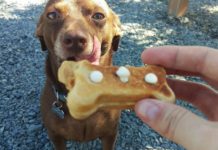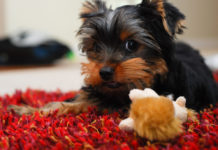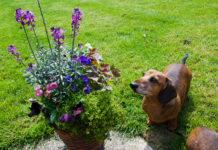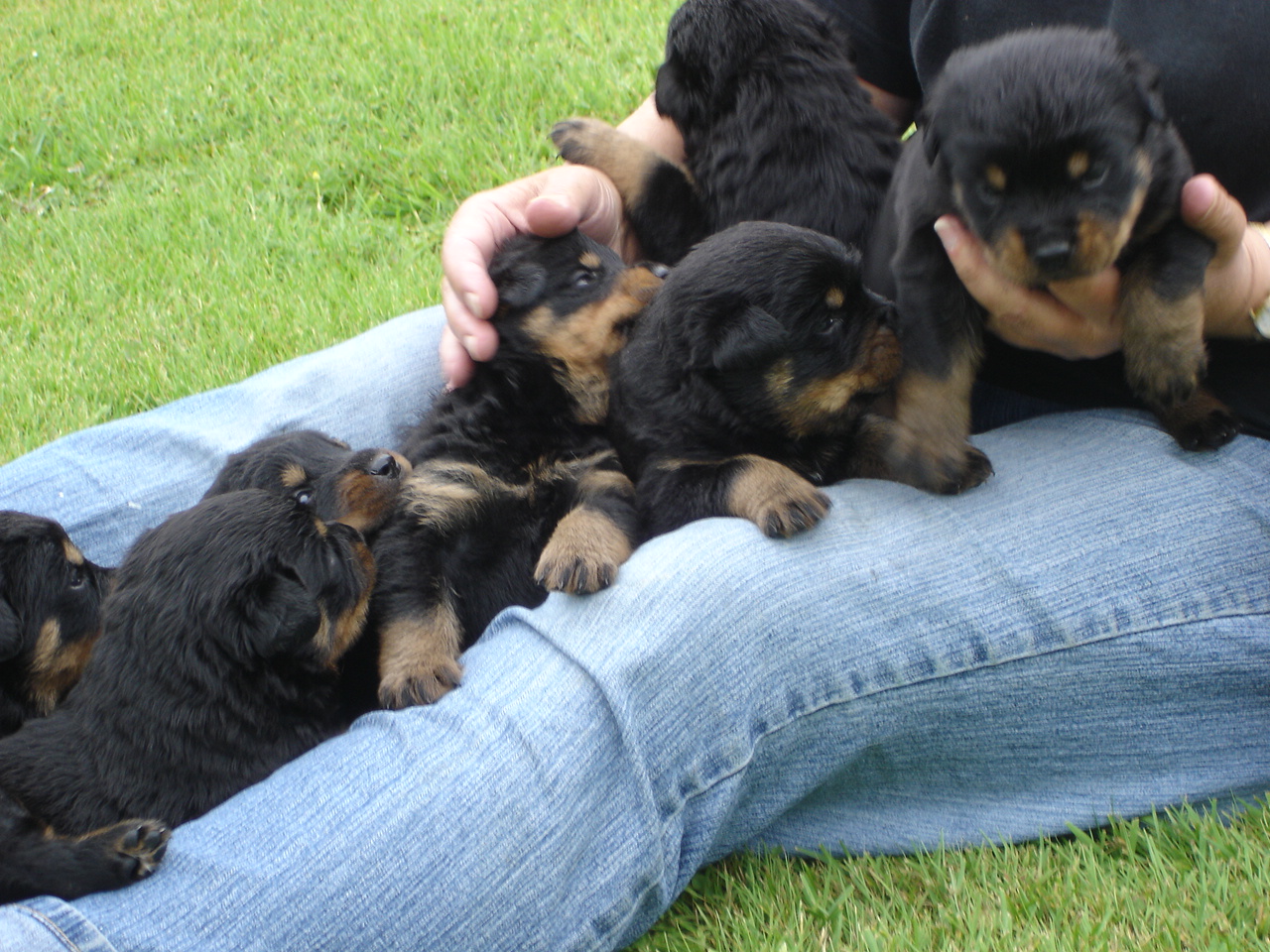What is Puppy Socialization?
Puppy socialization is an extremely important part in your puppy’s life. It is a process of gradually exposing her to the world’s sights, sounds and textures to teach her how to be calm and deal with each and every new learning experience with confidence, while going about her business as a happy, healthy dog.
Puppies that are not socialized properly often grow to fear or feel the need to defend themselves against things they have not been acclimated to. This can lead to problems with aggression and other reactive behaviors later on in the puppy’s life.
They often grow fear things that are not known and have trouble coping when being exposed to many of life’s challenges. Puppies that are well-socialized learn how to deal with these challenges and take life’s little curveballs in-stride.
How do I Socialize my Puppy?
The key to socialization is gradually exposing your puppy to each new experience. Pushing her into overly-stressful situations too quickly can have a negative effect on her learning process. She may find herself in a position that she isn’t able to cope with, possibly creating a situation that she wants no part of in the future. Again, the key is gradual exposure.
An important part of gradually exposing your puppy to new things, is being able to read your dog’s body language. If she looks scared or nervous, don’t keep pushing her. All socialization must be done at the dog’s level. Don’t try to force her into things she isn’t ready for. Start out with something easy and then gradually try to work her up to more intense events.
“Puppy Socialization must always be a positive experience.”
You want her to think that learning new things and places is fun and interesting, not frightening and stressful. Food is a great motivator. Use high-valued treats, petting, praise and a loving attitude to make her socialization exercises overwhelmingly positive ones.
What Types of Things or Places Should I Socialize my Puppy to?
Everything and everybody!! Take her to experience new places and to meet new people where you have a good deal of control over. A dog park for a young puppy (2 -4 months) may not be the best place since the chance of developing a fear or aggressive response to other dogs at such an early age is possible.
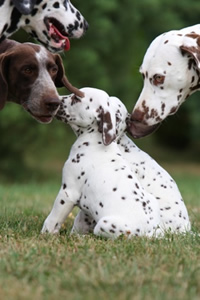 Take her to friends, neighbors, and/or family members whom have dogs that are good around puppies. If you plan on taking her to places with other dogs, always make sure those dogs will be safe around your puppy.
Take her to friends, neighbors, and/or family members whom have dogs that are good around puppies. If you plan on taking her to places with other dogs, always make sure those dogs will be safe around your puppy.
Visit places that have a gathering of people without a lot of other dogs. Shopping centers are good places to get your dog used to other people. Just make sure they aren’t providing too much stimulation.
Remember, you want gradual exposure at the dog’s level. Expose her to cold places, children, weird noises, strange smells, textures, etc. Basically, you want to expose her to everything and anything you can think of without overwhelming or frightening her.
The table below provides a good starting for your puppy’s socialization exercises. It by no means is a complete list. Try to think of other things, places or people you can add to it. Always use high-valued rewards to make each interaction successful. You can also use them to help guide her if she is a little skeptical at first.
Puppy Socialization Table
| Exposure to different types of textures | Wood, Carpet, Tile, Grass, Wet Grass, Sand, Dirt, Water, Cement, Hills, Stones, Brick, Woodchips, etc. |
| Exposure to different locations | Different areas of the house, outside, car, beach, schoolyard, ball field, garage, groomer, vet, shopping plaza, friends, neighbors and family homes, neighborhood, etc. |
| Exposure to different people | Children, adults, men, women, elderly people, people in wheelchairs, people with crutches, canes, walkers, hats, sunglasses, people of different sizes, and colors, family, friends and neighbors |
| Exposure to different objects | Vacuum cleaner, beach balls, tennis balls, fuzzy toys, radio, television, car keys, cardboard items, children’s toys, etc. |
| Exposure to different noises (keep positive and watch pup’s comfort level) | Doorbell, children, garage-door opener, radio, television, cars, motorcycles, babies crying, people yelling, lawnmower, stove-timers, shopping carts, balls bouncing, skateboarders, etc. |
| Exposure to moving objects | Cats, squirrels, dogs, skateboarders, rollerbladers, bicycles, cars, joggers, children playing, etc. |
| Alone Time (in crate, at least an hour a day every day) | While you’re in…bathroom, outside, neighbor’s house, mowing lawn, taking out trash, cleaning the house, etc. |
| Exposure to different challenges | Up and down steps, jump over obstacles, play hide and seek, sliding doors, up on scales, walk through makeshift tunnel (cardboard, etc..) walk next to a vacuum, a stepstool, across a mat |
| Eat of out different food containers | Stainless steel bowl, wooden bowl, ceramic bowl, out of your hand, Buster cube, Kong, off of spoon, plates – paper, plastic, ceramic and wooden, nylon travel bowls, plastic travel water trays |
More Puppy Socialization Ideas
- Go to the beach and let your dog check out the sights, sounds and smells
- Make vet and groomer trips without getting examined (get approval first). Get a treat and leave.
- Brush your dog once, treat. Brush a few times, treat. Brush for 30 seconds, treat. Keep building tolerance to being groomed.
- Put puppy in bathtub, give treat and remove. Put her in tub, put on water and treat. Keep building up tolerance to getting a bath.
- Show your dog her toothbrush and treat. Open her mouth and treat. Try brushing one tooth and treat. Build up tolerance to getting teeth brushed.
- Show your dog the nail clippers and treat. Touch her paw and treat. Hold her paw and treat. Keep building up tolerance to getting her nails clipped.
- Have a neighbor or family member ring your doorbell or knock on your door without coming in. Keep practicing this to desensitize your dog to the doorbell or knocking and the arrival of guests.
- Take out her leash and just carry it around the house for 5 minutes ignoring your dog. Put it away. Take it out and place it on the counter, again, ignore the dog. Desensitize your dog to the sight of the leash and going for a walk.
- Put a hat on your head then give your dog a treat. Put on some sunglasses and repeat. Put on hat and sunglasses and again give her a treat.
- Have young children hand-feed your dog some food and treats.


